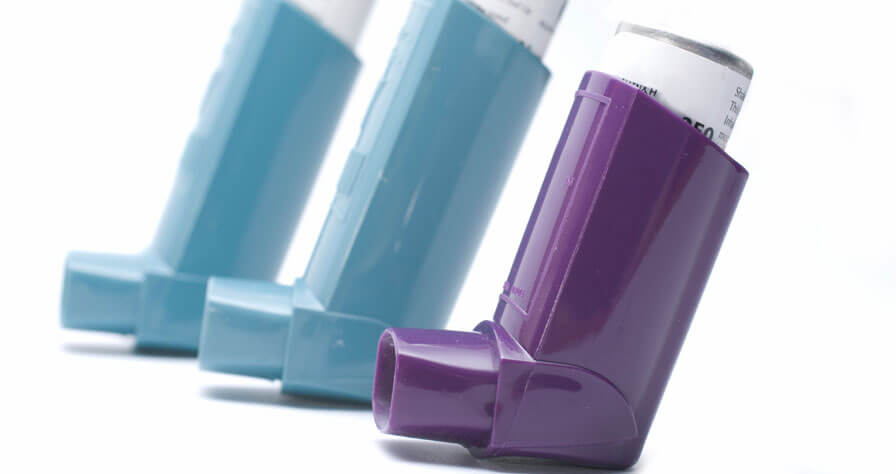What Does Exercise-Induced Asthma Feel Like?

Exercise-induced asthma is a condition where your airways narrow during strenuous exercise. Also called exercise-induced bronchoconstriction, it makes it hard to breathe during exercise.
Symptoms tend to improve approximately 30 minutes after an exercise session. However, some people experience “late-phase” symptoms that return up to 12 hours after the session and can take up to a day to resolve.
Exercise-induced asthma episodes are common in people with asthma. Around 90% of patients may experience it. Up to 10% of people who don’t have asthma may also be affected.
Sports featuring sustained effort, like soccer, basketball, distance running, and ice hockey, are common triggers of exercise-induced asthma.
Why Does Exercise Cause Wheezing?
Wheezing is a common symptom of exercise-induced asthma. Others include:
- Shortness of breath or the feeling that it’s difficult to force air out of your lungs
- Coughing (which is the only symptom for some people)
- Chest tightness
- Unusual fatigue
These symptoms occur because airway constriction inhibits airflow into and out of your lungs. If you previously thought these sensations were “par for the course” when exercising, you may want to talk with your doctor about them.
Factors that can worsen exercise-induced asthma include:
- Cold, dry air
- High pollen counts or pollution levels that reduce air quality
- Recently having a respiratory illness like a cold
- Past or current exposure to smoke or fumes from things like cleaning supplies and paint
How Is Exercise-Induced Asthma Diagnosed?
Doctors diagnose exercise-induced asthma by talking with you about your symptoms, including when they occur and how long they last. They also listen to your lung sounds.
Then, they typically ask you to perform an activity to trigger your symptoms, like going for a run near the facility. After your exercise session, the doctor checks your lung function with a spirometry test.
You exhale into a tube attached to a device called a spirometer, emptying your lungs as much as possible. The machine measures how well your lungs function and that figure informs the doctor’s diagnosis.
Treating Exercise-Induced Asthma
There’s no cure for exercise-induced asthma. However, you can take action to prevent or minimize your symptoms.
That begins with warming up for at least six minutes before you start an exercise session. Your doctor may also prescribe medications for addressing symptoms, including:
- Short-acting beta-agonists (SABAs). These bronchodilator drugs are inhaled using what is sometimes called a rescue inhaler. They reduce symptoms quickly but can also prevent symptoms if taken 15 minutes before a workout.
- Long-acting beta-agonists (LABAs). These drugs relax muscles in the airways, making it easier to breathe. While they aren’t as effective as SABAs for preventing symptoms, you can use them for that purpose. It’s important to note that LABAs won’t reduce symptoms that develop once you start exercising.
- Inhaled corticosteroids. These medications improve airflow by reducing airway swelling.
- Leukotriene modifiers. These drugs, which you swallow, prevent airway inflammation. They may cause side effects like mood swings and behavior changes.
- Mast cell stabilizers. You take this medication using a nebulizer (a machine that turns liquid into inhalable droplets) approximately 15 minutes before exercising to prevent symptoms.
Other steps to avoid an attack include:
- Covering your nose and mouth while exercising
- Timing your workouts to correspond to lower pollen counts and pollution levels
- Managing your common asthma symptoms correctly
- Being vigilant for exercise-induced asthma symptoms
It’s also good to tell teammates, coaches, and others you’re with when exercising about your condition, so they understand your challenges.
Sports Less Likely to Trigger Exercise-Induced Asthma
You’re less likely to experience exercise-induced asthma with activities involving short bursts of effort — sports like baseball, softball, and volleyball. The same applies to sports requiring less exertion, like walking, casual biking, and golf.
Indoor sports can also be less triggering since there’s less exposure to pollen and pollution. With its warm, humid environment, swimming can be a good choice for people with asthma. A saltwater pool is best since some people find chlorine irritates their airways.
When to Get Help with Exercise-Induced Asthma
Exercise-induced asthma is treatable. If you think you may have it, talk with your Baptist Health doctor. They can help you find the best way to exercise comfortably, often in collaboration with our allergy and asthma experts.
If you or someone you’re with experiences severe shortness of breath, call 911 or go to an emergency room immediately.



